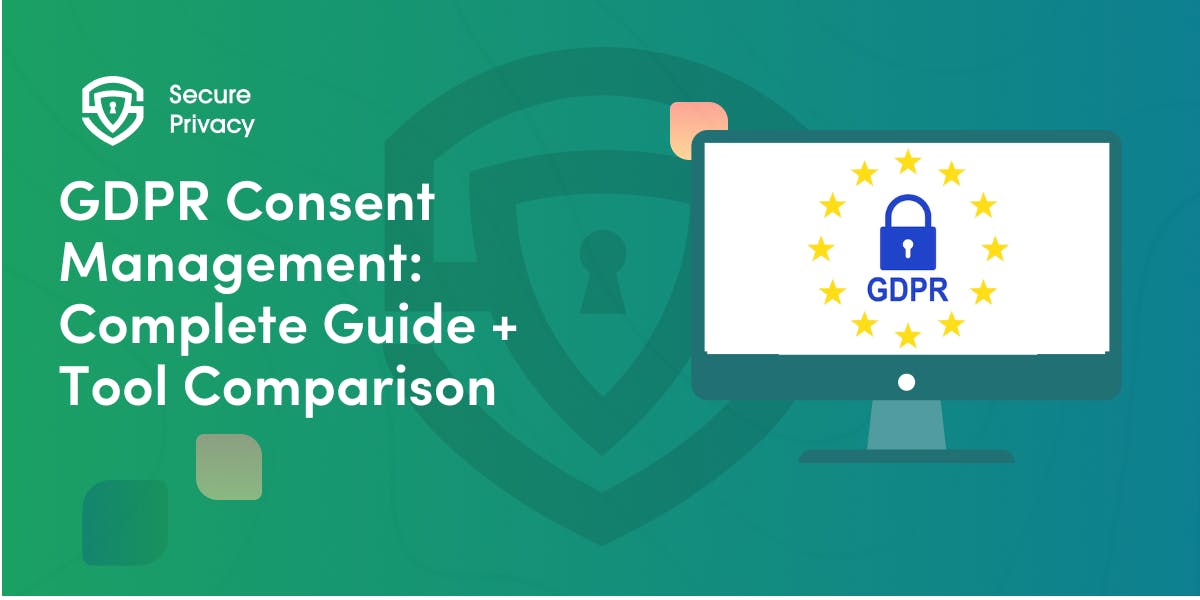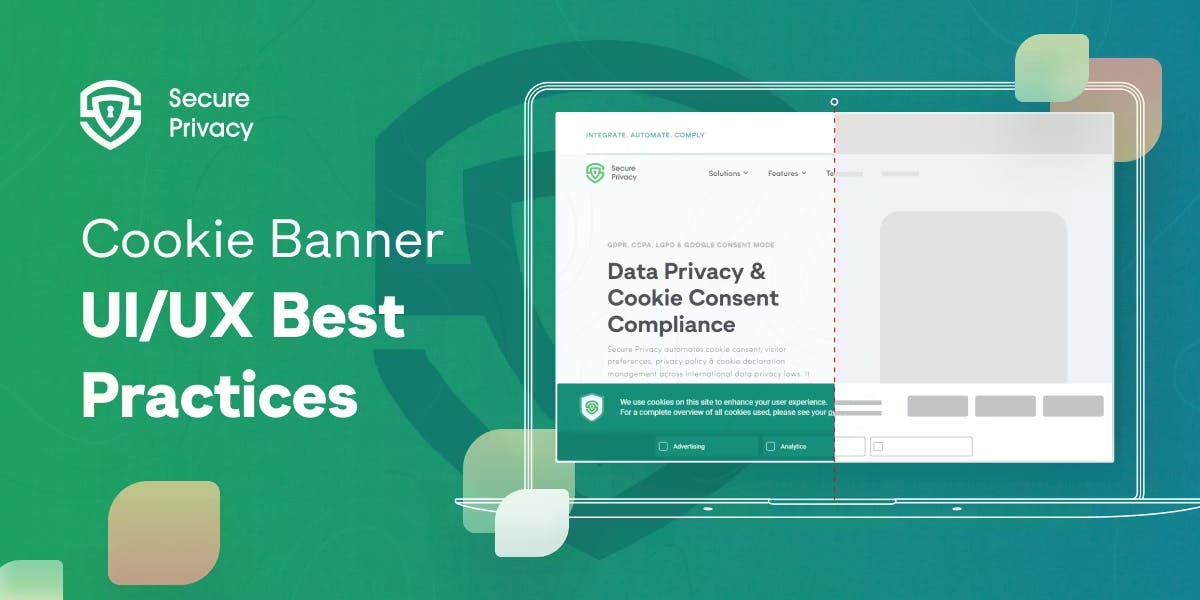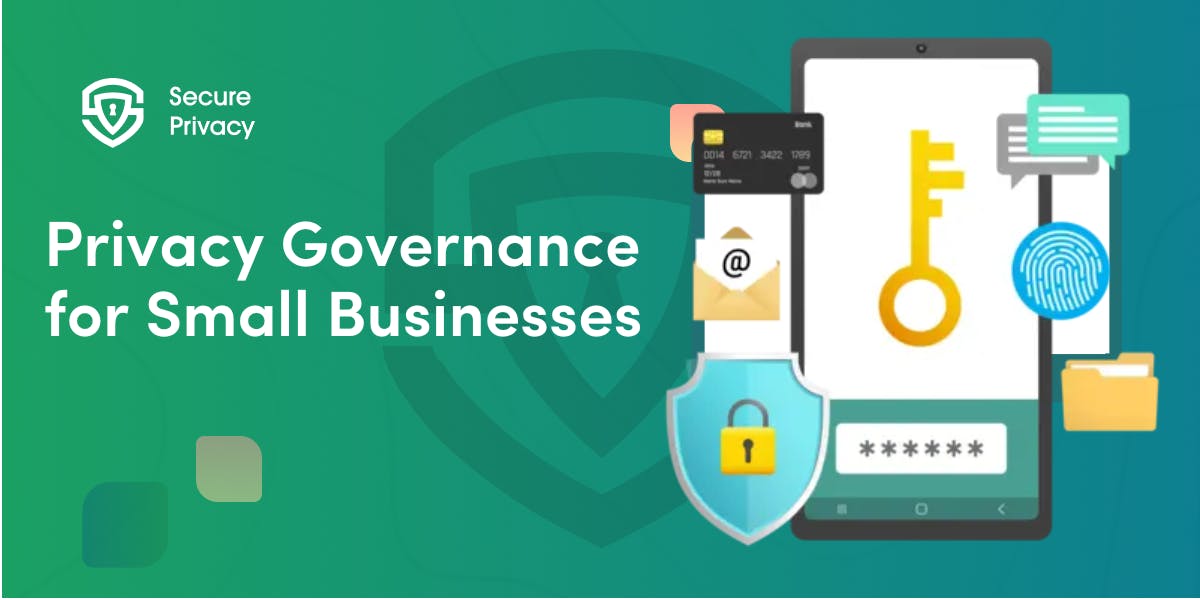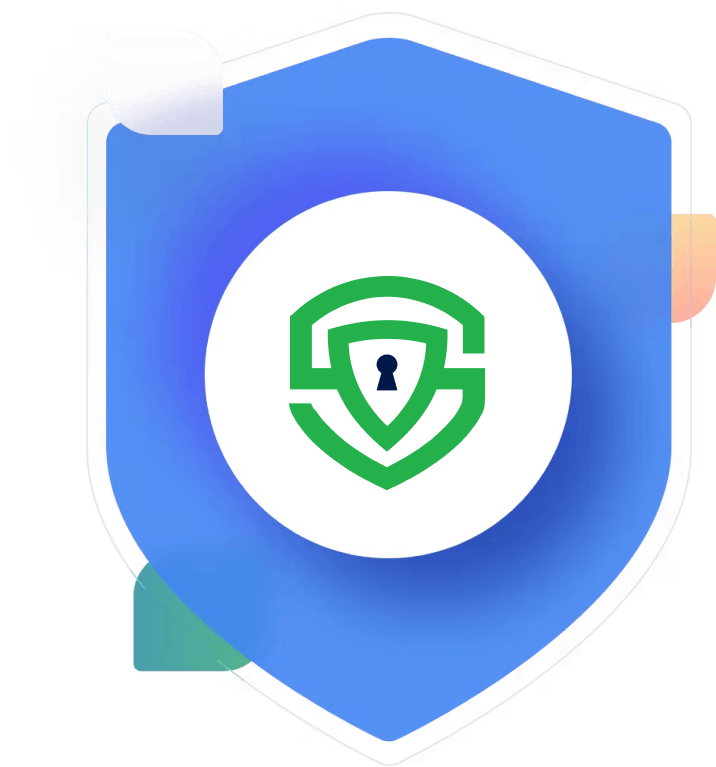Dynamic Consent for EdTech Platforms: Transforming Student Data Privacy Through Continuous Control
Your child clicks through another learning app at school. Math practice, reading assessment, virtual science lab — each platform collecting data about learning patterns, behavior, and performance. Meanwhile, you signed a broad consent form months ago that covered "educational technology use" without knowing which specific platforms your child would encounter or how their data would be analyzed, shared, or stored.
This scenario plays out in classrooms worldwide as educational technology becomes increasingly sophisticated and prevalent. Schools deploy hundreds of different EdTech platforms, each with distinct data practices and privacy policies. Traditional consent models force families into impossible choices: provide blanket permission for unknown future uses or reject beneficial educational services entirely.
Dynamic consent offers a transformative alternative that recognizes data permissions as an ongoing conversation rather than a one-time decision. This approach enables families to maintain granular control over student data while allowing schools and technology providers to innovate responsibly. Rather than signing away broad rights at enrollment, families can adjust permissions as new technologies emerge and their comfort levels evolve.
Why Traditional Consent Fails in Educational Technology
Current consent mechanisms in educational settings demonstrate fundamental inadequacies that leave families without meaningful control over their children's data.
The Blanket Permission Problem
Most EdTech consent processes require families to make sweeping decisions about data use without adequate information about specific applications or future developments. When you consent to basic learning management system functionality at the beginning of a school year, it becomes impossible to anticipate how that same data might be applied through new artificial intelligence tools, predictive analytics systems, or third-party integrations that emerge throughout the academic year.
This unknowable future problem forces an impossible choice between providing blanket permission for undefined future uses or rejecting beneficial educational services entirely. Traditional consent models cannot accommodate the rapid evolution of educational technology capabilities, where new applications and analytical purposes emerge regularly that weren't conceived when initial consent was obtained.
Platform Fragmentation Creates Consent Chaos
Modern school districts deploy hundreds of separate EdTech platforms and data collection systems operated by different vendors, each typically requiring its own consent process. Students interact with learning management systems, assessment platforms, communication tools, virtual reality applications, and adaptive learning software throughout their school day, each with distinct data practices and privacy policies.
This fragmentation creates consent fatigue among families while making it virtually impossible for parents to maintain meaningful oversight of their children's digital educational experiences. The administrative burden of managing separate consent processes for dozens of platforms overwhelms busy families and often results in blanket approvals without careful consideration.
Legal Loopholes Undermine Parental Rights
Educational technology companies often exploit loopholes in federal privacy laws meant to protect children, turning privacy protections into opportunities for commercial data collection without genuine parental consent. The Family Educational Rights and Privacy Act (FERPA) generally requires written parental consent to disclose student information to third parties but permits "school officials" to access information in certain circumstances.
EdTech companies manipulate this exception by deeming themselves "school officials" in their terms of service, claiming the right to collect and disseminate student information without submitting to the school's direct control as required by law. Nonprofit research reveals that 60% of school apps send student data to third-party advertising platforms, while only 14% of schools enable parents to provide meaningful consent to technology use.
The Children's Online Privacy Protection Act (COPPA) provides additional protection for children under 13, but EdTech companies and schools often erroneously claim that COPPA broadly permits schools to consent on behalf of parents to commercial data use, even over parents' express objections. These legal ambiguities highlight the urgent need for clearer consent mechanisms that bridge the gap between regulatory intent and technological reality.
How Dynamic Consent Works in Practice
Dynamic consent represents a paradigm shift from static, one-time agreements toward interactive, ongoing relationships between families and educational technology providers.
Continuous Communication and Control
Dynamic consent systems create personalized digital interfaces that enable two-way communication between students, parents, and educational technology providers. Instead of relying on lengthy privacy policies that few people read or understand, these interfaces provide real-time information about data collection and use in accessible formats.
Families can maintain granular control over specific types of data collection and use rather than accepting or rejecting entire platforms. Parents and students can make nuanced decisions about different aspects of data processing, such as allowing basic learning analytics while restricting behavioral tracking or commercial data sharing. This granular approach recognizes that families may have different comfort levels with various types of data use.
Real-Time Permission Management
When new features, analytical capabilities, or data sharing partnerships emerge, dynamic consent systems notify families and request specific permissions rather than assuming broad consent covers all future applications. This approach enables ongoing negotiation and adjustment of permissions as new technologies and applications emerge that weren't conceived when initial consent was obtained.
The timing and frequency of consent interactions require careful calibration to maintain engagement without creating notification fatigue. Successful systems prioritize the most significant data use changes for active consent while handling minor operational adjustments through transparent notification mechanisms.
Transparent Data Use Tracking
Dynamic consent interfaces provide ongoing visibility into how children's data is being used, creating accountability mechanisms that help rebuild trust in educational technology. Families can access information about which platforms their children use, what data is collected, how it's analyzed, and with whom it's shared, all presented in understandable terms rather than legal jargon.
This transparency helps address the current trust deficit in educational technology by providing families with concrete information about data practices rather than requiring them to rely on broad assurances or complex privacy policies.
Implementation Benefits for All Stakeholders
Dynamic consent systems create advantages for families, schools, and technology providers by establishing clearer expectations and more sustainable relationships around student data.
Enhanced Family Empowerment
Dynamic consent provides families with genuine, ongoing control over student data rather than forcing them to make irreversible decisions based on incomplete information. The personalized nature of dynamic consent interfaces allows families to maintain control that reflects their values and comfort levels while enabling their children to benefit from appropriate educational technology applications.
This approach acknowledges that data use preferences may change as students grow and as family circumstances evolve. Younger students may require more restrictive permissions that gradually expand as they develop greater digital literacy and independence. Dynamic systems can accommodate these changes without requiring complete re-enrollment or loss of educational benefits.
Reduced Legal Risk for Schools and Vendors
Dynamic consent systems provide educational institutions and technology providers with clearer documentation of permission scope and enable proactive compliance management. Schools benefit from knowing exactly what type of consent is attached to specific data uses and having clear mechanisms to seek new consent when data applications change.
For educational technology providers, dynamic consent systems can reduce legal risk while enabling innovation by providing clear pathways for introducing new features and capabilities with appropriate permissions. This approach creates more sustainable business models that don't depend on exploiting consent loopholes or broad permissions that families don't understand.
Improved Educational Outcomes Through Trust
When families trust that their privacy preferences are respected, they're more likely to allow their children to participate fully in beneficial educational technology applications. Dynamic consent systems can increase overall participation in educational technology while ensuring that participation reflects informed family decisions rather than default acceptance of broad terms.
This increased trust and participation can lead to better educational outcomes as more students benefit from personalized learning applications, adaptive assessments, and collaborative platforms that require some level of data collection to function effectively.
Technical and Practical Implementation Challenges
Successfully implementing dynamic consent in educational technology requires addressing substantial technical, administrative, and equity challenges.
Integration with Existing Educational Infrastructure
Dynamic consent systems must integrate with existing student information systems, learning management platforms, and vendor ecosystems without creating additional administrative burden for already-stretched educational staff. This integration challenge requires careful API design and standardization efforts to ensure that consent preferences can be communicated effectively across multiple platforms and systems.
The technical infrastructure supporting dynamic consent must be robust enough to handle complex relationships between students, parents, schools, and multiple technology vendors while maintaining security and privacy standards appropriate for sensitive educational data. Many school districts lack the technical expertise and resources needed to implement and maintain sophisticated consent management systems, particularly in under-resourced districts that serve the most vulnerable student populations.
Digital Equity and Access Considerations
The digital divide presents a significant obstacle to equitable dynamic consent implementation, as families without reliable internet access or digital devices may be unable to participate effectively in ongoing consent management. This technological barrier could create a two-tiered system where families with greater digital resources maintain better control over their children's data while others default to blanket permissions or reduced access to educational technology benefits.
Dynamic consent systems must be designed with offline alternatives and multiple access methods to ensure equitable participation across diverse family circumstances. This includes providing phone-based consent options, paper backup systems, and multilingual interfaces that accommodate diverse community needs.
User Experience and Engagement Design
User interface design represents a critical success factor for dynamic consent implementation, as the system must be intuitive enough for busy parents to use effectively while providing sufficient detail for informed decision-making. The interface must present complex data use scenarios in understandable terms while avoiding consent fatigue through thoughtful design choices about when and how to request permission updates.
Educational institutions serve diverse communities with different cultural approaches to privacy and varying levels of digital literacy, requiring dynamic consent platforms to accommodate multiple languages and cultural contexts. The system must balance the goal of keeping families informed about data use changes with the practical reality that too-frequent requests for permission updates may lead to automatic approval without consideration.
Overcoming Implementation Obstacles
Despite significant challenges, several strategies can facilitate successful dynamic consent adoption in educational technology.
Regulatory and Policy Support
Regulatory frameworks should be updated to clarify consent requirements for educational technology while closing existing loopholes that allow companies to circumvent parental permission requirements. This regulatory clarity should include specific guidance on dynamic consent implementation standards and requirements for ongoing communication about data use changes.
Federal and state education agencies could provide funding and technical assistance to help school districts implement dynamic consent systems, particularly in under-resourced communities that face the greatest implementation challenges. Policy incentives could encourage vendors to adopt genuine dynamic consent capabilities while penalizing platforms that rely on exploitative consent mechanisms.
Industry Standards and Best Practices
Technology vendors should be encouraged to adopt industry standards for dynamic consent implementation through market incentives and regulatory requirements. Industry associations could develop best practice guidelines and certification programs that help families identify platforms with genuine commitment to ongoing consent management.
Open-source tools and resources could be developed to reduce the technical barriers for smaller vendors to implement dynamic consent capabilities. Collaborative development of common consent management interfaces could reduce implementation costs while improving user experience consistency across different educational platforms.
Capacity Building and Training
Educational institutions should invest in developing internal capacity for privacy-protective technology procurement and implementation, including staff training on consent management and data governance best practices. Professional development resources should be developed to help educational staff understand and implement effective consent management practices.
Schools should prioritize vendors that offer genuine dynamic consent capabilities while avoiding platforms that rely on exploitative consent mechanisms or unclear data sharing practices. Procurement guidelines should include specific requirements for dynamic consent functionality and transparent data use communication.
Building a Privacy-Protective Educational Technology Future
Dynamic consent represents a fundamental reimagining of how families can maintain control over student data in an increasingly complex educational technology landscape. By moving beyond static, one-time agreements toward ongoing relationships between families and data custodians, dynamic consent offers the potential to restore trust and accountability to educational technology while enabling continued innovation in digital learning.
The path toward widespread dynamic consent adoption requires coordinated action across multiple stakeholders, including policymakers, educational institutions, technology vendors, and advocacy organizations. Success demands sustained commitment to addressing implementation challenges including administrative burden, digital equity concerns, and vendor resistance, while maintaining focus on the ultimate goal of serving student interests.
Future research should evaluate the effectiveness of different dynamic consent approaches in educational settings, including studying family engagement patterns, impact on educational outcomes, and long-term privacy protection effectiveness. Longitudinal studies could help understand how consent preferences evolve as students mature and how dynamic systems can best accommodate changing privacy needs throughout educational journeys.
The future of educational technology depends on developing sustainable approaches to data governance that balance innovation with privacy protection. Dynamic consent provides a promising framework by recognizing that meaningful consent must be an ongoing process rather than a one-time decision, enabling families to maintain agency over their children's data while participating in the benefits of digital learning.
Success in implementing dynamic consent will create educational technology ecosystems that serve student learning while respecting family privacy preferences and maintaining the trust necessary for effective educational partnerships. This transformation requires viewing privacy protection not as an obstacle to educational innovation, but as a foundation for sustainable, trustworthy digital learning environments that serve all students and families effectively.
Frequently Asked Questions
What exactly is dynamic consent and how does it differ from current consent practices?
Dynamic consent is an interactive, ongoing permission system that allows families to continuously adjust their data-sharing preferences rather than making one-time, unchangeable decisions. Unlike traditional consent where you sign a broad agreement at enrollment, dynamic consent lets you modify permissions as new technologies emerge, your child grows, or your comfort level changes. You might allow basic learning analytics while restricting behavioral tracking, and adjust these preferences throughout the school year.
How would dynamic consent work practically for busy parents?
Dynamic consent systems use user-friendly digital interfaces that send notifications only for significant changes in data use, avoiding overwhelming busy families with constant requests. The system prioritizes the most important decisions while handling minor operational changes through transparent notifications. Parents can set preferences once and receive alerts only when new features or data sharing partnerships require specific permission, with options to approve, deny, or request more information.
What happens if parents can't access digital consent systems due to technology barriers?
Effective dynamic consent systems must include offline alternatives such as phone-based consent options, paper backup systems, and multilingual support to ensure equitable participation. Schools should provide multiple access methods including in-person assistance, printed materials, and telephone support to accommodate families without reliable internet access or digital devices. The goal is ensuring all families can participate meaningfully regardless of their technological resources.
How can schools manage dynamic consent across hundreds of different EdTech platforms?
Successful implementation requires standardized APIs and integration systems that allow consent preferences to be communicated effectively across multiple platforms without creating excessive administrative burden. Schools should prioritize vendors that offer genuine dynamic consent capabilities and work toward consolidated consent management systems that can handle multiple platforms through unified interfaces rather than requiring separate consent processes for each tool.
Will dynamic consent limit students' access to beneficial educational technology?
Dynamic consent aims to increase overall participation in educational technology by building trust and allowing families to make informed decisions about specific applications. Rather than forcing all-or-nothing choices, dynamic consent enables families to approve beneficial uses while restricting concerning practices. This granular approach often results in greater overall participation as families feel more comfortable when they have meaningful control over data use.
What protections exist against EdTech companies exploiting legal loopholes?
Dynamic consent systems create clearer documentation of actual parental preferences, making it harder for companies to claim broad permissions through legal technicalities. Regulatory updates should close existing loopholes in FERPA and COPPA that allow companies to circumvent genuine parental consent. Additionally, transparency requirements in dynamic consent systems make it easier for families and advocates to identify and challenge exploitative practices.
How does dynamic consent handle disagreements between parents and older students?
Dynamic consent systems must accommodate complex family structures while respecting student agency as they mature. This typically involves graduated permissions that expand student control as they develop greater digital literacy and independence, while maintaining parental involvement in certain data use decisions. Clear policies should address custody arrangements and family disagreements while prioritizing student educational interests and appropriate privacy protection.
What evidence exists that dynamic consent actually improves privacy protection?
While dynamic consent is still emerging in educational settings, research from healthcare and other sectors shows that ongoing engagement increases participant understanding and satisfaction with data use decisions. Early implementations in educational contexts demonstrate improved family awareness of data practices and more nuanced permission-setting that better reflects actual family preferences rather than default acceptance of broad terms.
Get Started For Free with the
#1 Cookie Consent Platform.
No credit card required

GDPR Consent Management: Complete Guide + Tool Comparison
Your website could be costing you €20 million. Every cookie that loads before user consent, every "accept all" button without an equally prominent reject option — these aren't minor oversights. They're violations that data protection authorities are actively hunting.
- Legal & News
- Data Protection

How to Design High-Performing Cookie Banners in 2026
“You're one click away from a €325 million fine”. That's what Google learned in September 2025 when French regulators hit them for cookie consent violations. The message is clear: cookie banner design in 2026 isn't about getting extra clicks anymore — it's about survival.
- Legal & News
- Data Protection

Privacy Governance for Small Businesses: Step-by-Step Guide
You're a 20-person company. A customer asks for their data. Your marketing team just added a new tracking pixel. Your CRM vendor updated their terms. And you just realized you might need to comply with GDPR, CCPA, or both.
- Legal & News
- Data Protection

